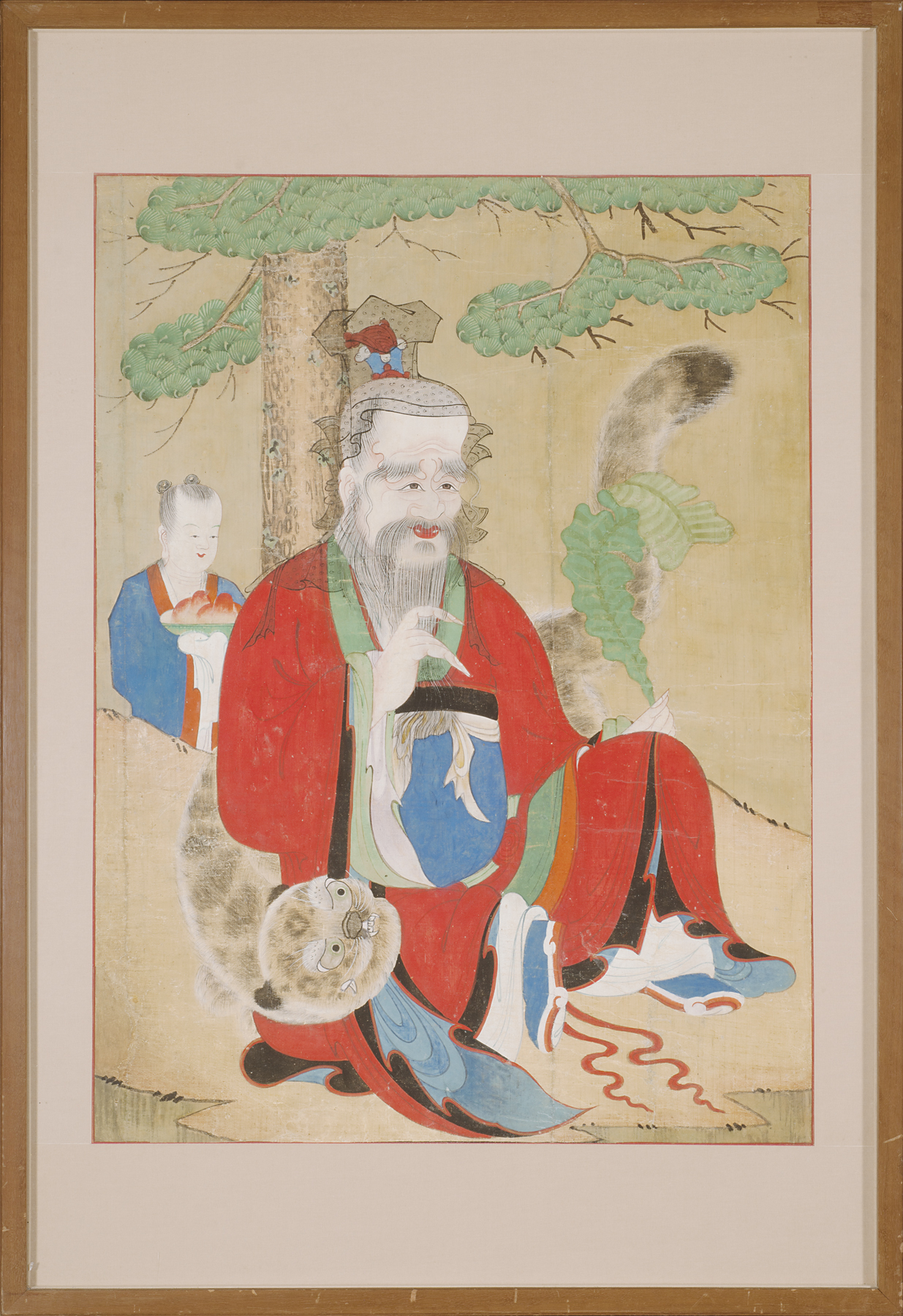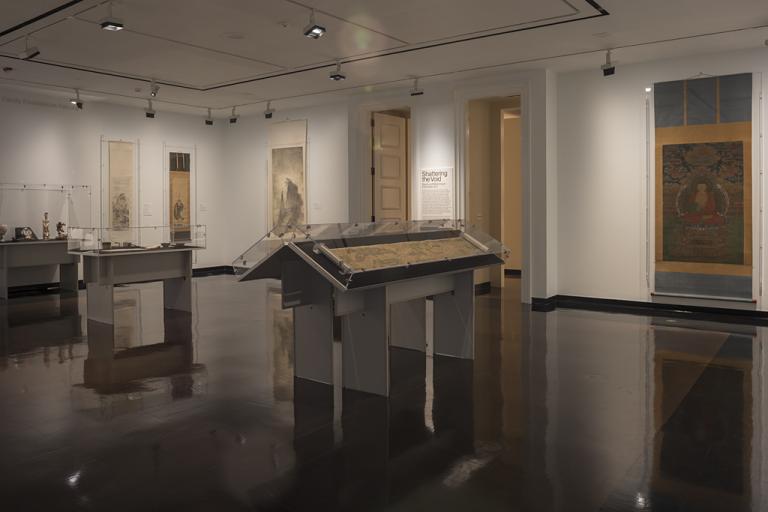San-shin (mountain spirit), unknown maker from Korea
Artwork Overview
San-shin (mountain spirit)
, 1800s, Joseon dynasty (1392–1910)
Where object was made: Korea
Material/technique: silk; ink; mineral color
Dimensions:
Frame Dimensions (Height x Width x Depth): 49 1/4 x 34 x 1 1/2 in
Weight (Weight): 22 lbs
Frame Dimensions (Height x Width x Depth): 49 1/4 x 34 x 1 1/2 in
Weight (Weight): 22 lbs
Credit line: Museum purchase: R. Charles and Mary Margaret Clevenger Art Acquisition Fund
Accession number: 2014.0052
Not on display
If you wish to reproduce this image, please submit an image request











